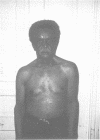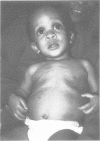Abstract
Detailed clinical, ophthalmological, and molecular studies were performed on a multigeneration family in which there were many subjects with type 1 neurofibromatosis, a common autosomal dominant disorder. Affected family members displayed a wide range of clinical findings including, in two subjects, features seen in Noonan syndrome (triangular facies, downward slanting palpebral fissures, micrognathia, short stature, and learning disability). Subjects have been described previously whose features have overlapped with neurofibromatosis and Noonan syndrome, and it has been suggested that these persons might represent a separate condition. DNA haplotype analysis showed linkage of the neurofibromatosis phenotype seen in this family to the proximal long arm of chromosome 17 in the region where the type 1 neurofibromatosis gene has been mapped. These results imply that the Noonan phenotype seen in some patients with type 1 neurofibromatosis might be the result of variable or variant expression of the neurofibromatosis gene on chromosome 17. The possible role of non-specific factors, such as fetal hypotonia, in producing the neurofibromatosis-Noonan phenotype needs further investigation. The availability of closely linked and intragenic molecular markers for neurofibromatosis could potentially be useful in the diagnosis and characterisation of patients and families with atypical forms of neurofibromatosis.
Full text
PDF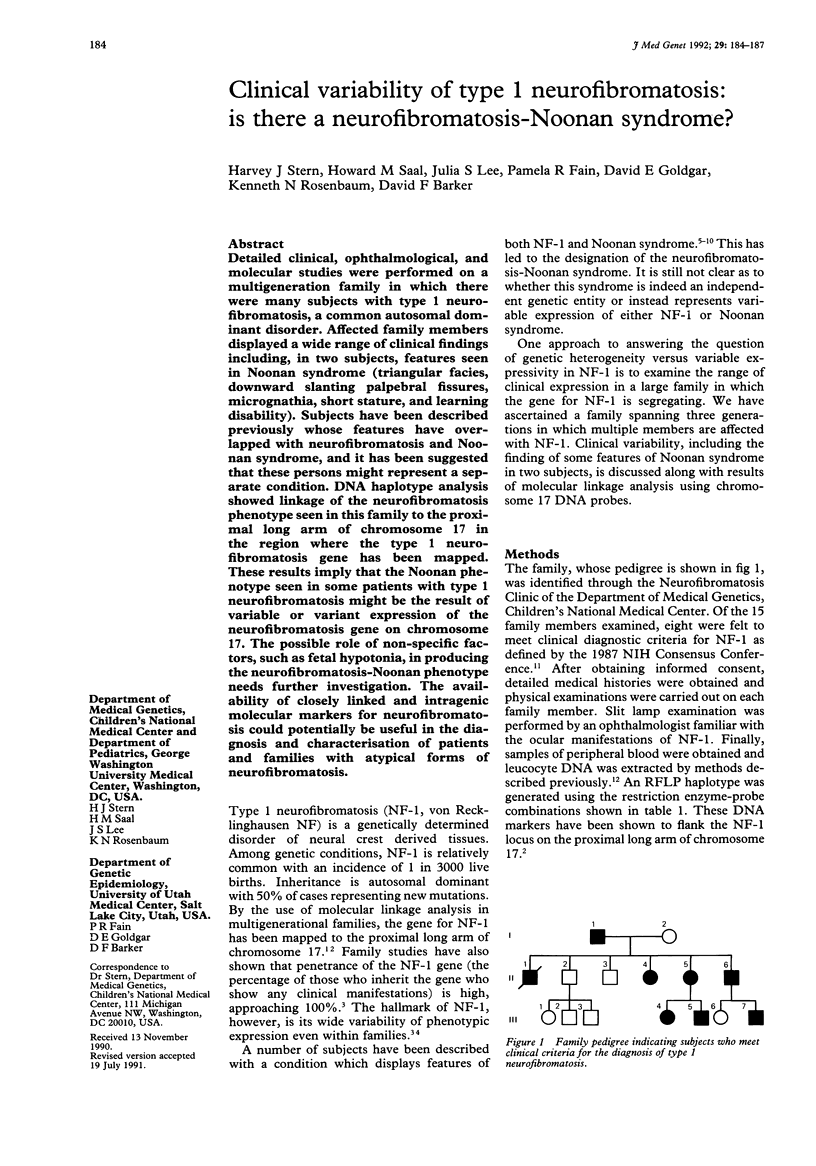
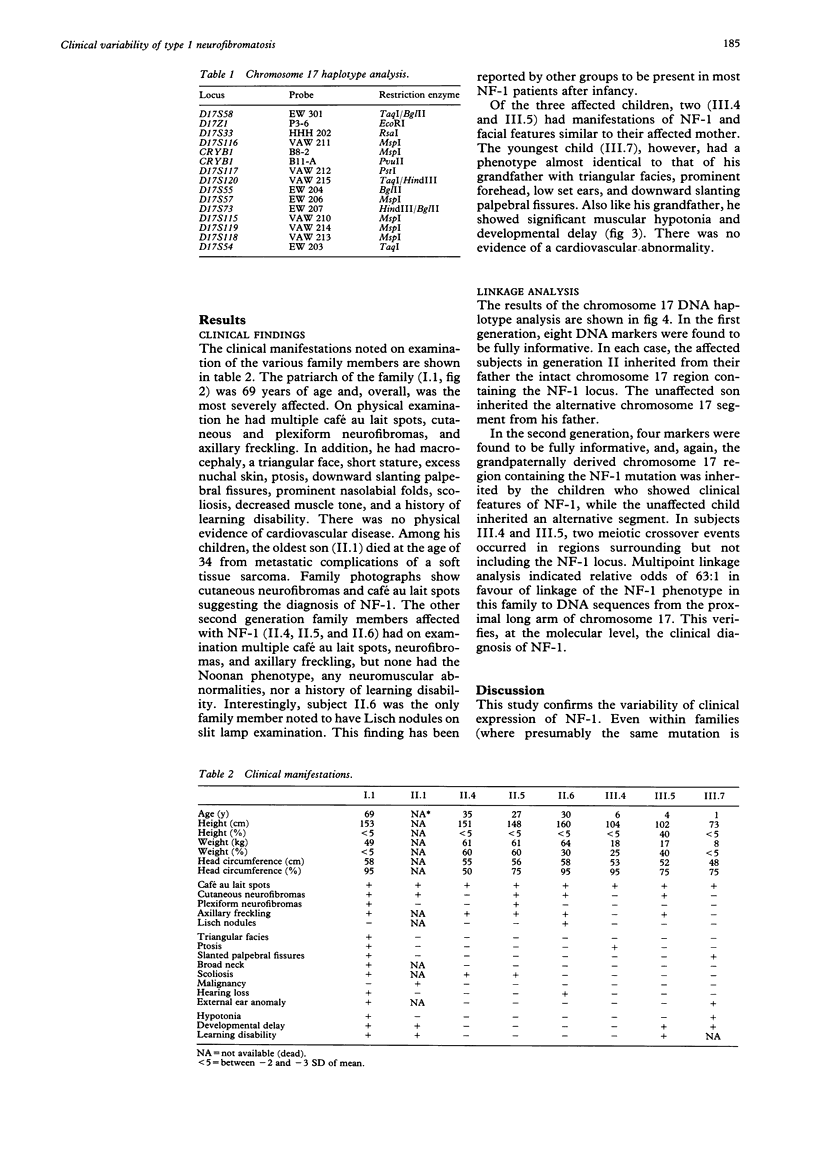
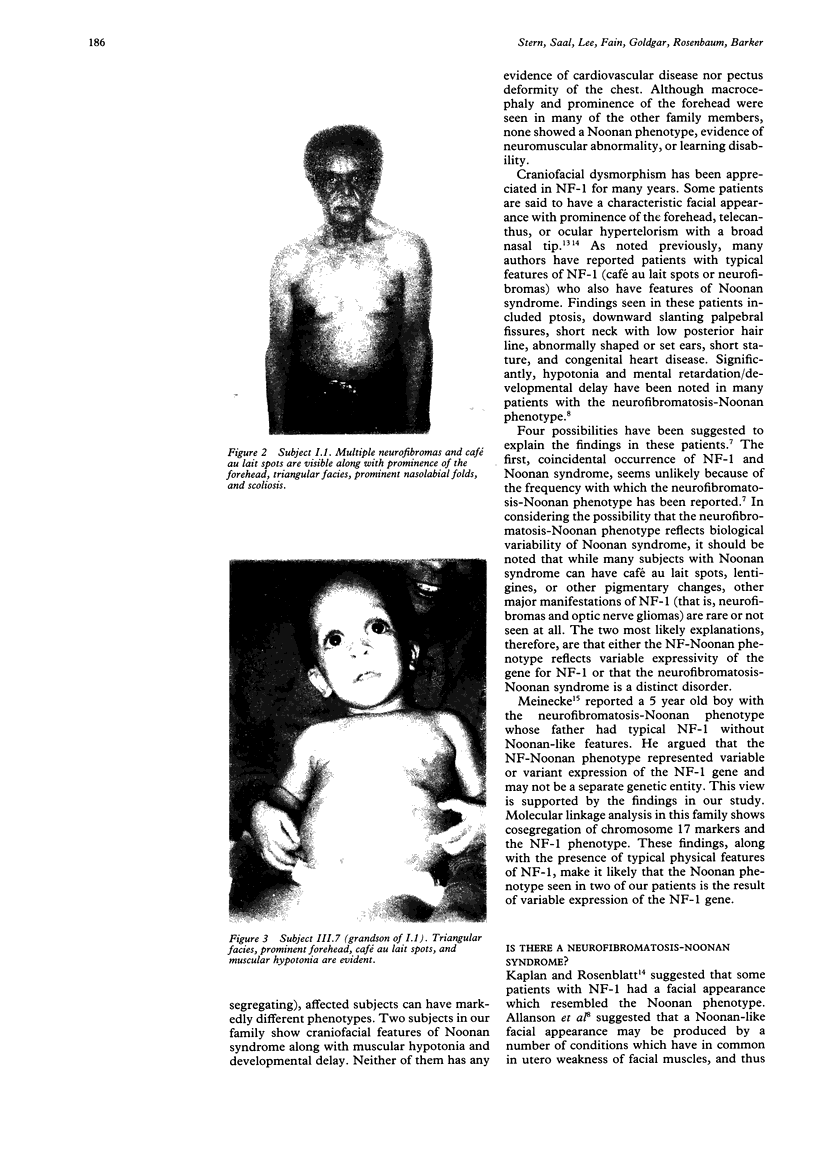
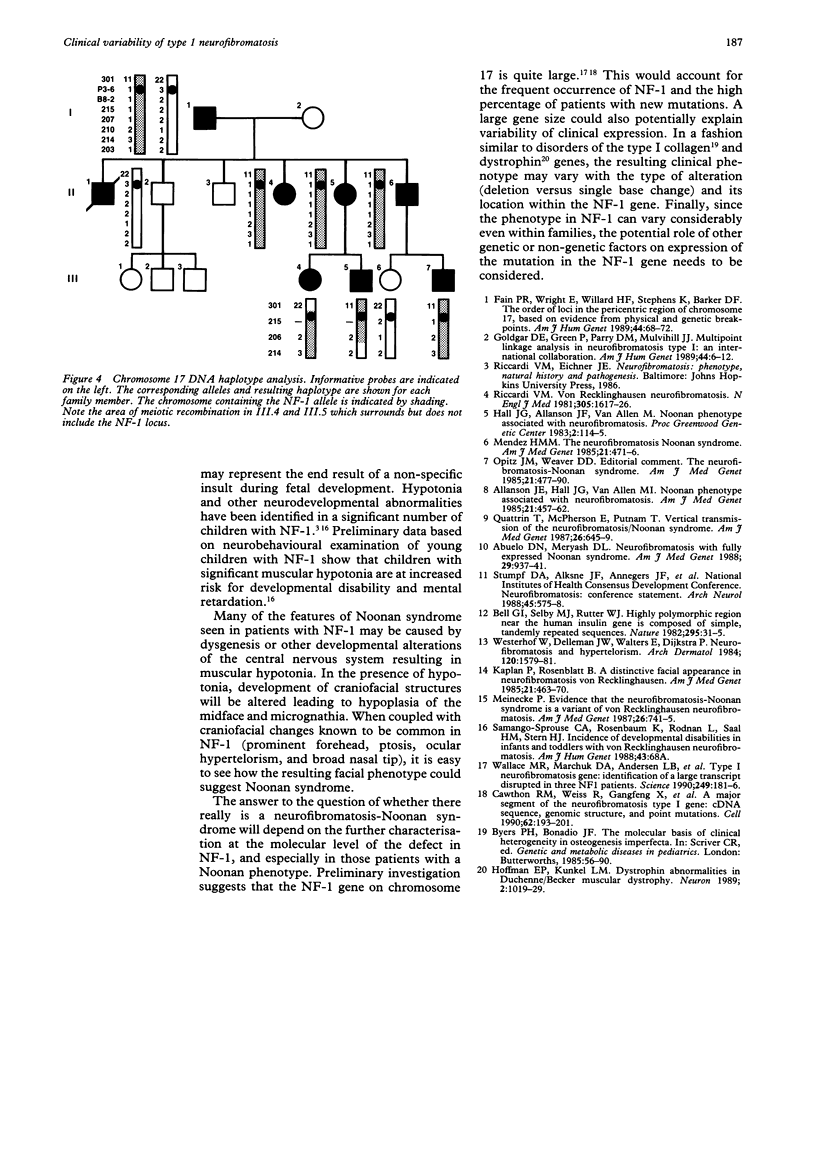
Images in this article
Selected References
These references are in PubMed. This may not be the complete list of references from this article.
- Abuelo D. N., Meryash D. L. Neurofibromatosis with fully expressed Noonan syndrome. Am J Med Genet. 1988 Apr;29(4):937–941. doi: 10.1002/ajmg.1320290426. [DOI] [PubMed] [Google Scholar]
- Allanson J. E., Hall J. G., Van Allen M. I. Noonan phenotype associated with neurofibromatosis. Am J Med Genet. 1985 Jul;21(3):457–462. doi: 10.1002/ajmg.1320210307. [DOI] [PubMed] [Google Scholar]
- Bell G. I., Selby M. J., Rutter W. J. The highly polymorphic region near the human insulin gene is composed of simple tandemly repeating sequences. Nature. 1982 Jan 7;295(5844):31–35. doi: 10.1038/295031a0. [DOI] [PubMed] [Google Scholar]
- Cawthon R. M., Weiss R., Xu G. F., Viskochil D., Culver M., Stevens J., Robertson M., Dunn D., Gesteland R., O'Connell P. A major segment of the neurofibromatosis type 1 gene: cDNA sequence, genomic structure, and point mutations. Cell. 1990 Jul 13;62(1):193–201. doi: 10.1016/0092-8674(90)90253-b. [DOI] [PubMed] [Google Scholar]
- Fain P. R., Wright E., Willard H. F., Stephens K., Barker D. F. The order of loci in the pericentric region of chromosome 17, based on evidence from physical and genetic breakpoints. Am J Hum Genet. 1989 Jan;44(1):68–72. [PMC free article] [PubMed] [Google Scholar]
- Goldgar D. E., Green P., Parry D. M., Mulvihill J. J. Multipoint linkage analysis in neurofibromatosis type I: an international collaboration. Am J Hum Genet. 1989 Jan;44(1):6–12. [PMC free article] [PubMed] [Google Scholar]
- Hoffman E. P., Kunkel L. M. Dystrophin abnormalities in Duchenne/Becker muscular dystrophy. Neuron. 1989 Jan;2(1):1019–1029. doi: 10.1016/0896-6273(89)90226-2. [DOI] [PubMed] [Google Scholar]
- Kaplan P., Rosenblatt B. A distinctive facial appearance in neurofibromatosis von Recklinghausen. Am J Med Genet. 1985 Jul;21(3):463–470. doi: 10.1002/ajmg.1320210308. [DOI] [PubMed] [Google Scholar]
- Meinecke P. Evidence that the "neurofibromatosis-Noonan syndrome" is a variant of von Recklinghausen neurofibromatosis. Am J Med Genet. 1987 Mar;26(3):741–745. doi: 10.1002/ajmg.1320260331. [DOI] [PubMed] [Google Scholar]
- Mendez H. M. The neurofibromatosis-Noonan syndrome. Am J Med Genet. 1985 Jul;21(3):471–476. doi: 10.1002/ajmg.1320210309. [DOI] [PubMed] [Google Scholar]
- Neurofibromatosis. Conference statement. National Institutes of Health Consensus Development Conference. Arch Neurol. 1988 May;45(5):575–578. [PubMed] [Google Scholar]
- Opitz J. M., Weaver D. D. The neurofibromatosis-Noonan syndrome. Am J Med Genet. 1985 Jul;21(3):477–490. doi: 10.1002/ajmg.1320210310. [DOI] [PubMed] [Google Scholar]
- Quattrin T., McPherson E., Putnam T. Vertical transmission of the neurofibromatosis/Noonan syndrome. Am J Med Genet. 1987 Mar;26(3):645–649. doi: 10.1002/ajmg.1320260320. [DOI] [PubMed] [Google Scholar]
- Riccardi V. M. Von Recklinghausen neurofibromatosis. N Engl J Med. 1981 Dec 31;305(27):1617–1627. doi: 10.1056/NEJM198112313052704. [DOI] [PubMed] [Google Scholar]
- Wallace M. R., Marchuk D. A., Andersen L. B., Letcher R., Odeh H. M., Saulino A. M., Fountain J. W., Brereton A., Nicholson J., Mitchell A. L. Type 1 neurofibromatosis gene: identification of a large transcript disrupted in three NF1 patients. Science. 1990 Jul 13;249(4965):181–186. doi: 10.1126/science.2134734. [DOI] [PubMed] [Google Scholar]
- Westerhof W., Delleman J. W., Wolters E., Dijkstra P. Neurofibromatosis and hypertelorism. Arch Dermatol. 1984 Dec;120(12):1579–1581. [PubMed] [Google Scholar]



